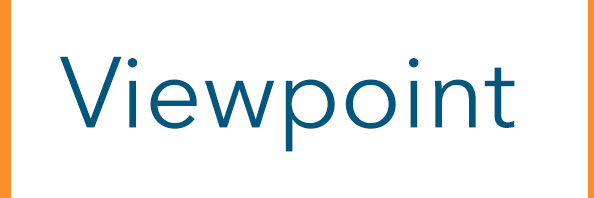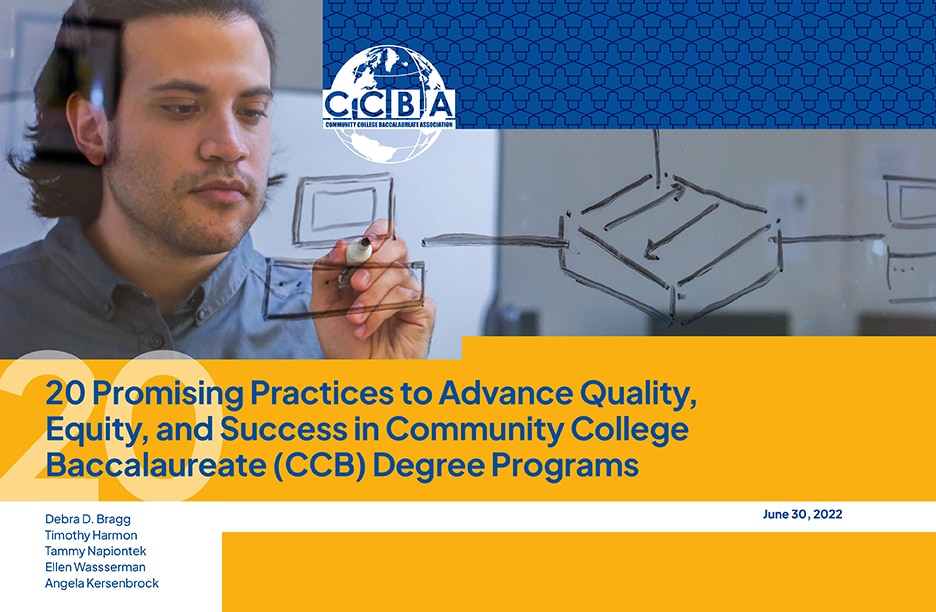From the time community college baccalaureate (CCB) degrees were envisioned, Washington state centered new programming on creating more equitable access and outcomes for students with limited opportunity to attend the university. Like many other CCB degrees around the country, practitioners recognized that many community college students are seeking a way to attend college near their homes, jobs, and family and friends. Centering CCBs in equity would enable graduates to complete bachelor’s degrees, secure well-paying jobs and advance in career paths vital to their own well-being while also contributing to their community’s livelihood.

Take Skagit Valley College (SVC) for example, SVC’s bachelor of applied science (BAS) degree in applied management was developed with equity-conscious programming in mind from the get-go. Sunaina Virendra, the college’s bachelor’s degree director, observes BAS programs are “rooted in ‘equity 360,’ a multi-dimensional approach to embedding principles of equity into every aspect of the program, from entry requirements and instruction to completion, labor market and post-baccalaureate studies.”
DataPoints: Growth areas among community college baccalaureate programs
Organized around cohorts, BAS programs use a spiral learning design that integrates open education resources, appreciative advising, awareness of culture-bound assumptions, contextualized professionalism and discipline knowledge, all in a way that supports the timely graduation of students. Results of SVC’s BAS programs suggest the plan is working. To date, 70% of students complete BAS degrees in 100% time, with 82% finishing in 150% time.
Interviews with students help explain why these high completion rates are possible as exemplified by one student who said, “I felt like I was tapping into a part of my brain that I had never been able to before, and I felt so empowered… I’m understanding topics that I haven’t been able to before, and I feel myself being drawn in to learning in a way I haven’t before.”
A closer look
Understanding how CCBs center equity to advance baccalaureate options for community college students was the goal of a year-long project led by the Community College Baccalaureate Association (CCBA) and Bragg & Associates, Inc., with funding from the ECMC Foundation. Using data from the national inventory of CCB degrees on the CCBA website, community college practitioners were invited to nominate practices that they believe contribute to more equitable student success in degree completion, good jobs, career advancement and fulfilling lives in their communities. All respondents work at CCBA institutional-member colleges and are also American Association of Community College (AACC) members.
CCBA’s new e-book, 20 Promising Practices to Advance Quality, Equity and Success in Community College Baccalaureate (CCB) Degree Programs, takes a holistic, student-centered view of CCB program design, development and implementation. Twenty practices are detailed in the six key areas of leadership and organizational support; access, equity and outcomes; pathway design; curriculum and instruction; student supports; and employer partnerships.
The e-book also offers lessons in four critical areas to help guide equity-conscious design and implementation of CCB degree programs.
Equity-minded practitioners
Practitioners leading CCB programs acknowledge that equitable student success must be intentionally designed into the fabric of baccalaureate degrees. Understanding student aspirations, needs and intended outcomes on a deep level gives practitioners the ammunition they need to level the playing field for students who have had little or no opportunity to pursue a baccalaureate degree.
While some CCB students have finished an associate or higher degree before enrolling in a CCB program, many have accumulated college credit but not yet finished a degree. Completing college is a critical goal for these students, most of whom attend college while working full-time. To meet these students’ needs, CCB programs recognize and address these critical familial, cultural, religious and other personal needs beginning with program design through to completion.
Examples of the lessons practitioners shared about equity-conscious CCB programming includes the “Numbers with Heart” initiative offered by Weatherford College (WC) in Texas. WC President Tod Allen Farmer explained this initiative asks the entire college community to envision caring as demonstrated through quality of service.
“Numbers with Heart recognizes everyone who works and studies at Weatherford is responsible for improving student outcomes,” he said.
At Lake Washington Institute of Technology (LWIT) in Washington state, data are used to design and implement CCB programs, including requiring personnel use data dashboards to disaggregate demographic and achievement measures and implement interventions that demonstrate evidence of closing equity gaps.
“When faculty can see the gaps in their own programs, they are motivated to implement change,” said Mike Potter, dean of instruction at LWIT. “They care deeply about all their students and are frustrated by persistent equity gaps. They have readily asked for help and implemented reforms inside and outside the classroom to close equity gaps. They are reinforced they are when able to see gaps close.”
Pathway-designed programs
Many practitioners described lessons they had learned by envisioning CCB degree programs as part of pathways that lead to employment, career advancement and graduate education. No longer associating career-technical education with terminal education, these practitioners sought to make the bachelor’s degree a viable option for their students, and they also sought paths beyond the baccalaureate. They pictured programs that would open even more doors for students by designing CCB degrees as pivotal to career pathways. Several practitioners spoke about CCB programs as energizing and inspiring students to be lifelong learners.
Exemplifying elements of pathway design, practitioners at Highline College (Washington) thought carefully about how to get students on a path, taking steps to remove bias in admissions processes for BAS programs. Tanya Powers, associate dean for BAS and workforce programs at the college, observed that this change involved informing “key stakeholders and the broader campus community so there is transparency, accuracy and clarity in reforming admissions processes.”
In another example, Dalia Sherif, executive dean of baccalaureate programs and partnerships at Lone Star College (Texas), explained how the bachelor’s in cybersecurity program recognizes the importance of networking students with industry leaders and actively engaging them in experiential learning that extends into employment. She observed that by strategically blurring the lines between the classroom and workplace, Lone Star advances more equitable outcomes for cybersecurity students, and students benefit when bridges are built to “help students navigate the pace of classroom learning and the dynamic industry pace that transcends the tools used in classes.”
Employer-engaged partners
Most CCB-degree programs are created with the goal of preparing graduates for well-paying employment that offers career advancement. This orientation is important because many CCB already have experience working in the industry for which they are pursuing a bachelor’s degree. Involving employers in program design and ongoing delivery of instruction, including work-based learning, helps to ensure these programs demonstrate quality, equity and student success. Involving employers in program improvement is also essential to ensuring changes made in the workplace are reflected in the curriculum.
We see this commitment to employer engagement and student success in the biomanufacturing BS program at MiraCosta College (California), where 93% of students in the first four CCB cohorts completed bachelor’s degrees and a similar high percentage obtained employment in the industry. Mike Fino, dean of math and science, attributed this success to the outstanding work of student success specialist Joanna Gomez, as well as to the program’s efforts to “involve industry partners early and often in curriculum design, equipment and facilities decisions, and advocacy with both the community and campus administration.”
Our research also revealed productive efforts to engage employers in Green River College’s partnership with “Mentors in Tech,” which according to Ken Hang, program director and software development instructor at the Washington college, helps students “navigate into a new career, engage earlier in career search activities, and foster confidence and a sense of belonging in industry.”
Community-anchored colleges
Possibly the most fundamental yet easily overlooked feature of CCB-degree programs is their rootedness in the local communities where students live and work. Traditional views of higher education that envision distancing students from their homes as a right of passage to adulthood are turned on their head when CCB degrees become attainable to adults well along on life’s journey. By situating baccalaureate degrees locally, where distance is reduced between home, work and school, students can reduce commute times and also attend college at more affordable tuition rates then universities.
Lessons learned about the importance of locally anchored CCB-degree programs include efforts by the Allied Health Center for Excellence — formed among Yakima Valley College (home of the center), LWIT, Centralia College, Edmonds College and others — to develop baccalaureate programs in behavioral healthcare. The center has encouraged colleges to emphasize team-based, inter-professional practices that integrate primary care and behavioral health into bachelor’s programs that prepare professionals to work locally.
At Centralia College, Joyce Hammer, vice president of instruction, observes how the early childhood education program is preparing teachers to work in the rural K-12 schools. Noting a severe need for teachers in the region, Hammer described Centralia’s development of a Google Map Tracker to provide “a visual representation showing that the majority of graduates are employed in local communities, and confirming Centralia College’s belief that this program is a significant contributor to addressing the teacher shortage in its rural area.”
These promising practices are illustrative of the holistic approach used by practitioners to serve students who seek a CCB degree. Recognizing the longer journey the country is embarking upon to grow CCB programs for students having limited options to pursue a baccalaureate degree, CCBA will continue to lead national efforts to share promising practices in the future. The stage is set for America’s community colleges to adopt more baccalaureate degrees, and fortunately, good ideas for centering equity in these new degrees are plentiful in CCBA’s new e-book.






